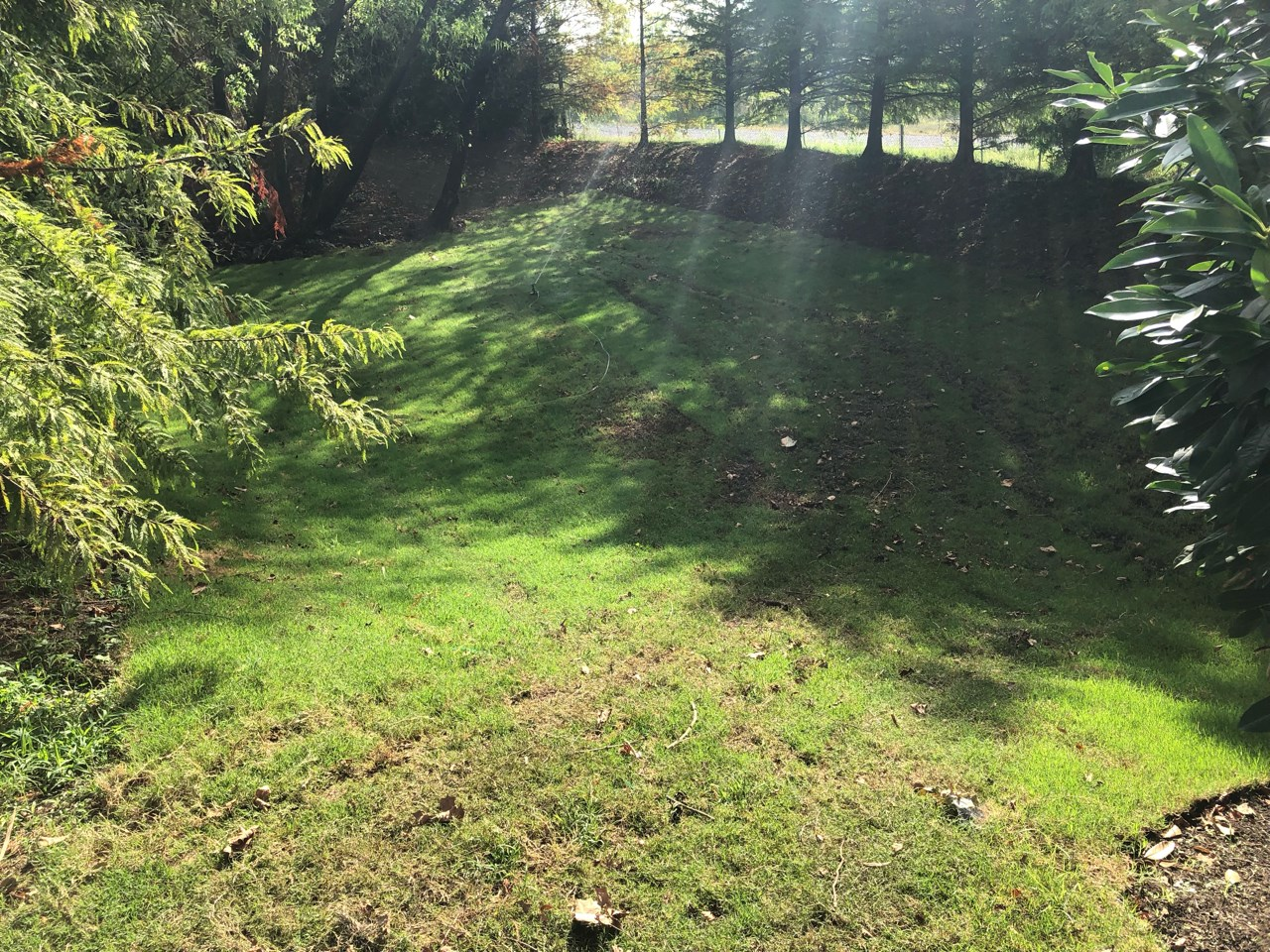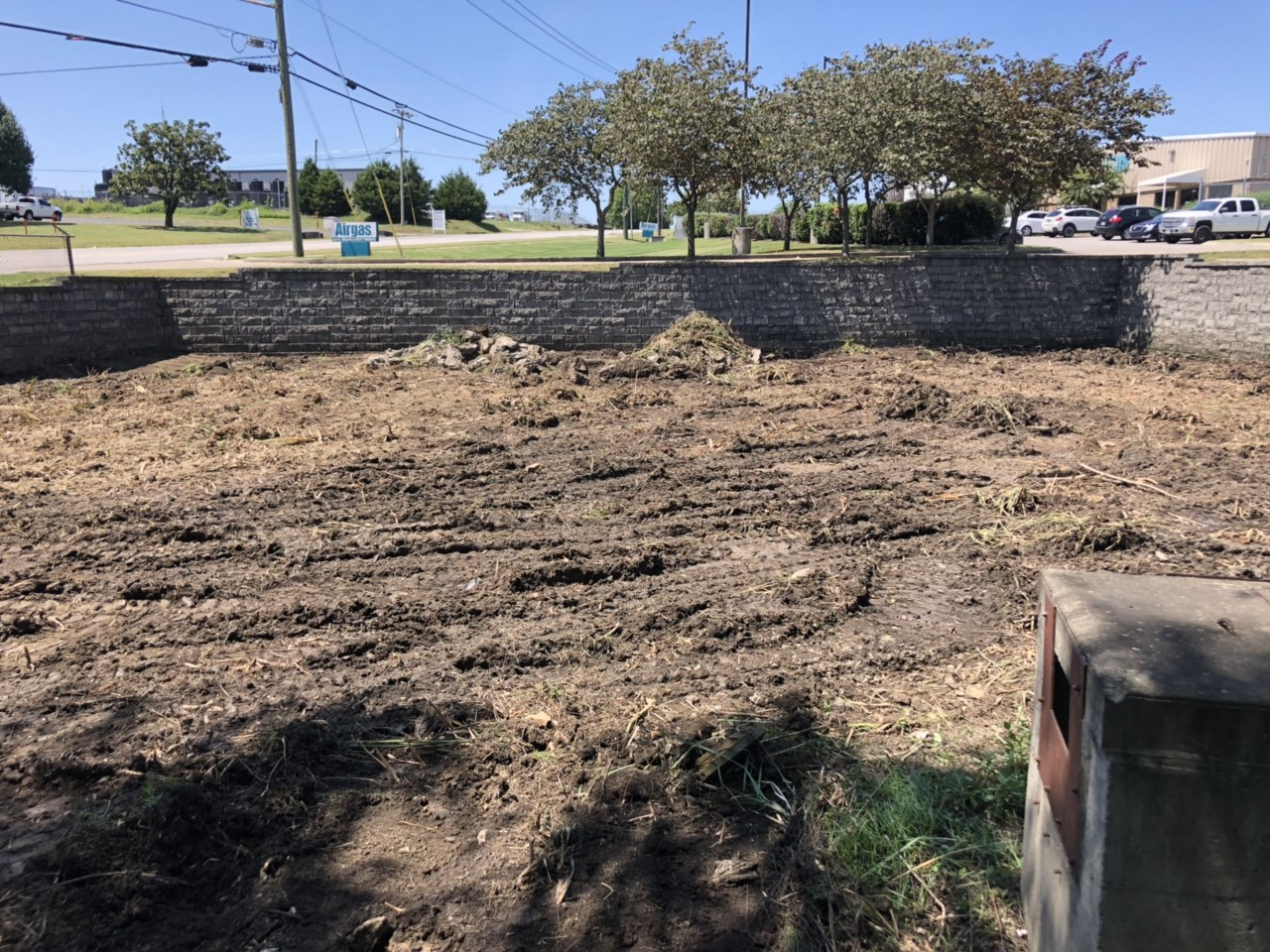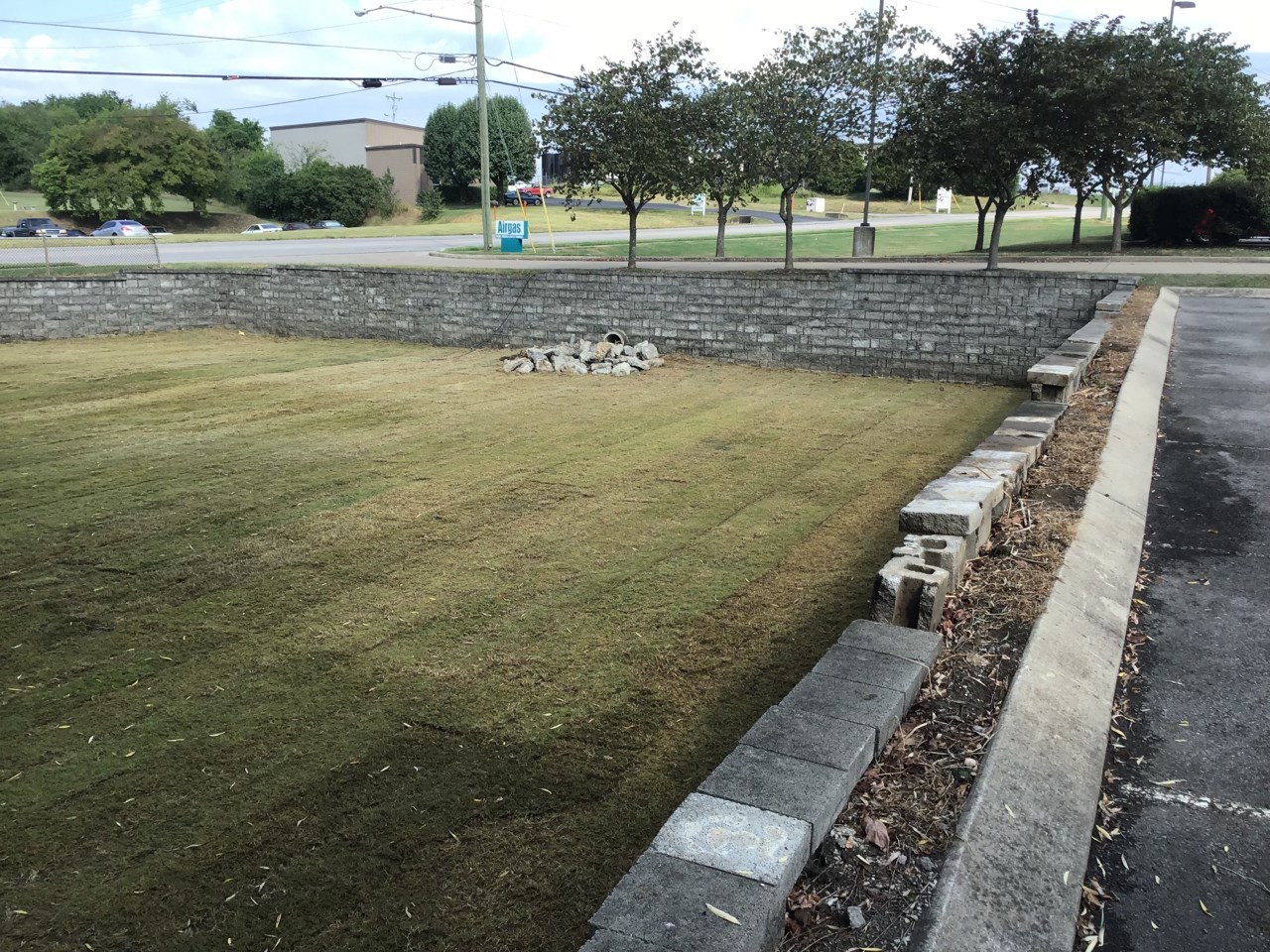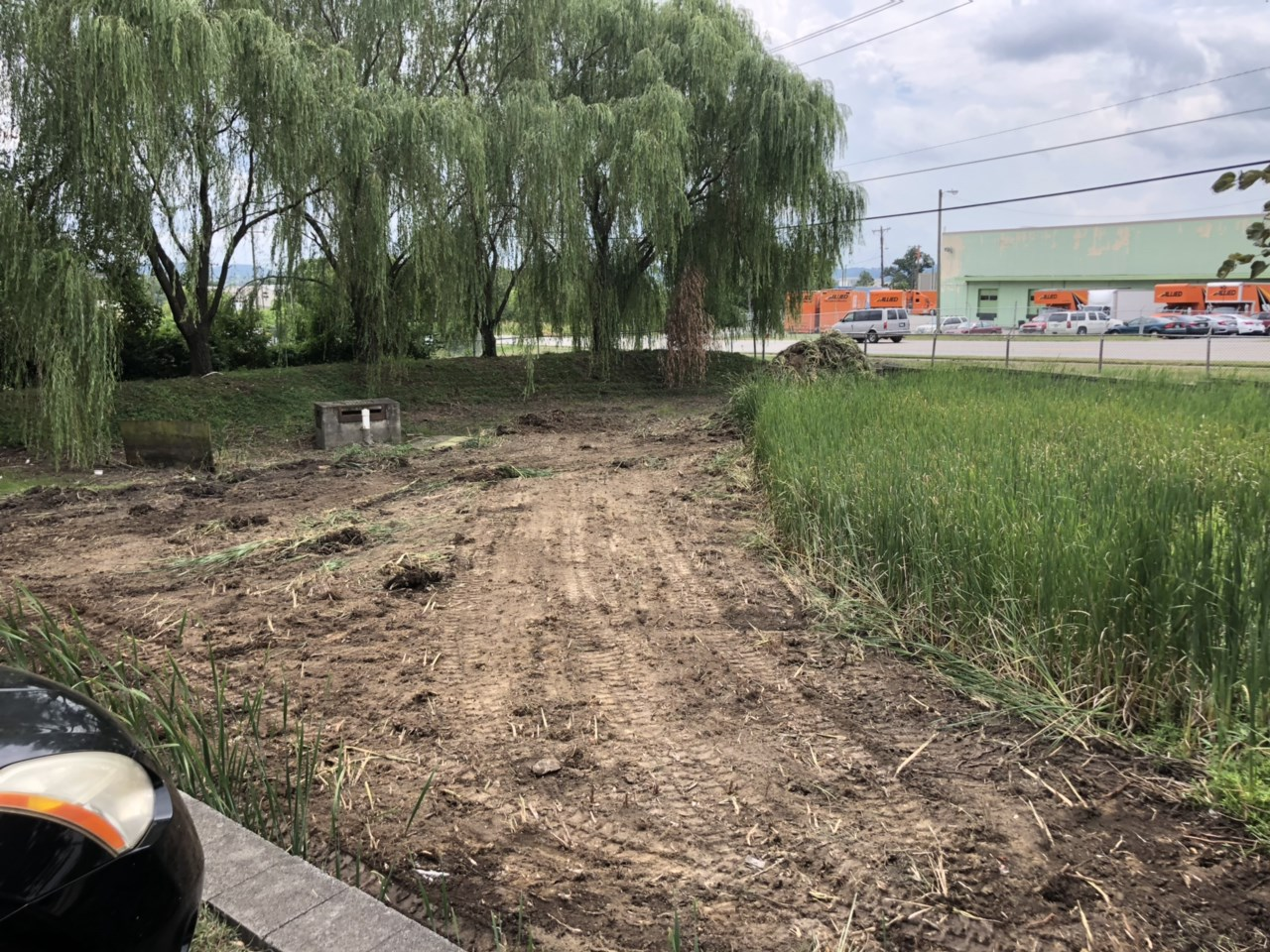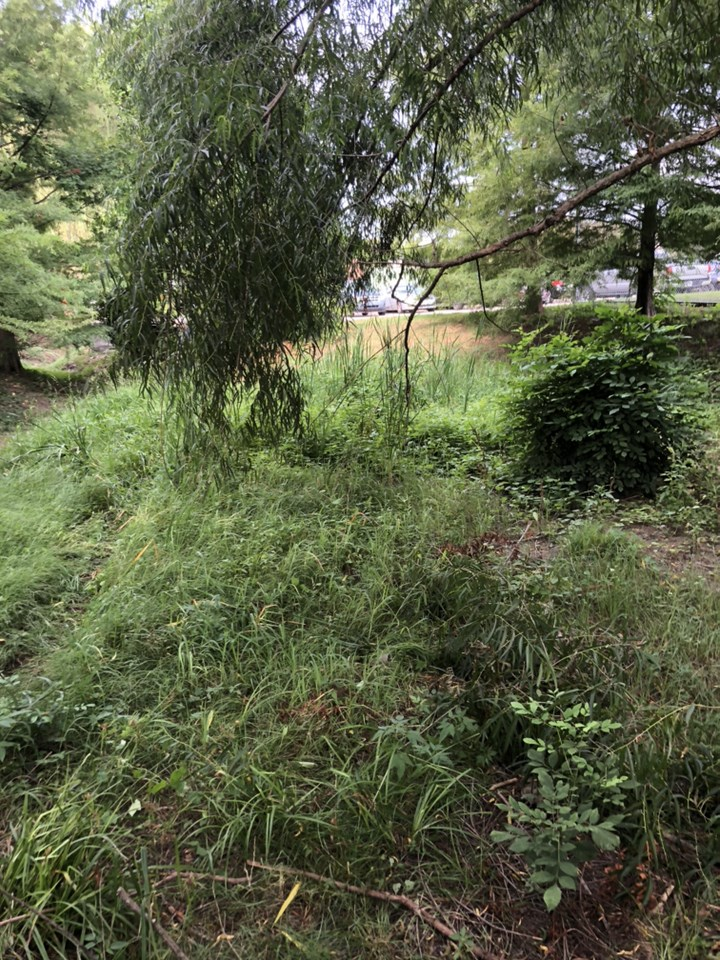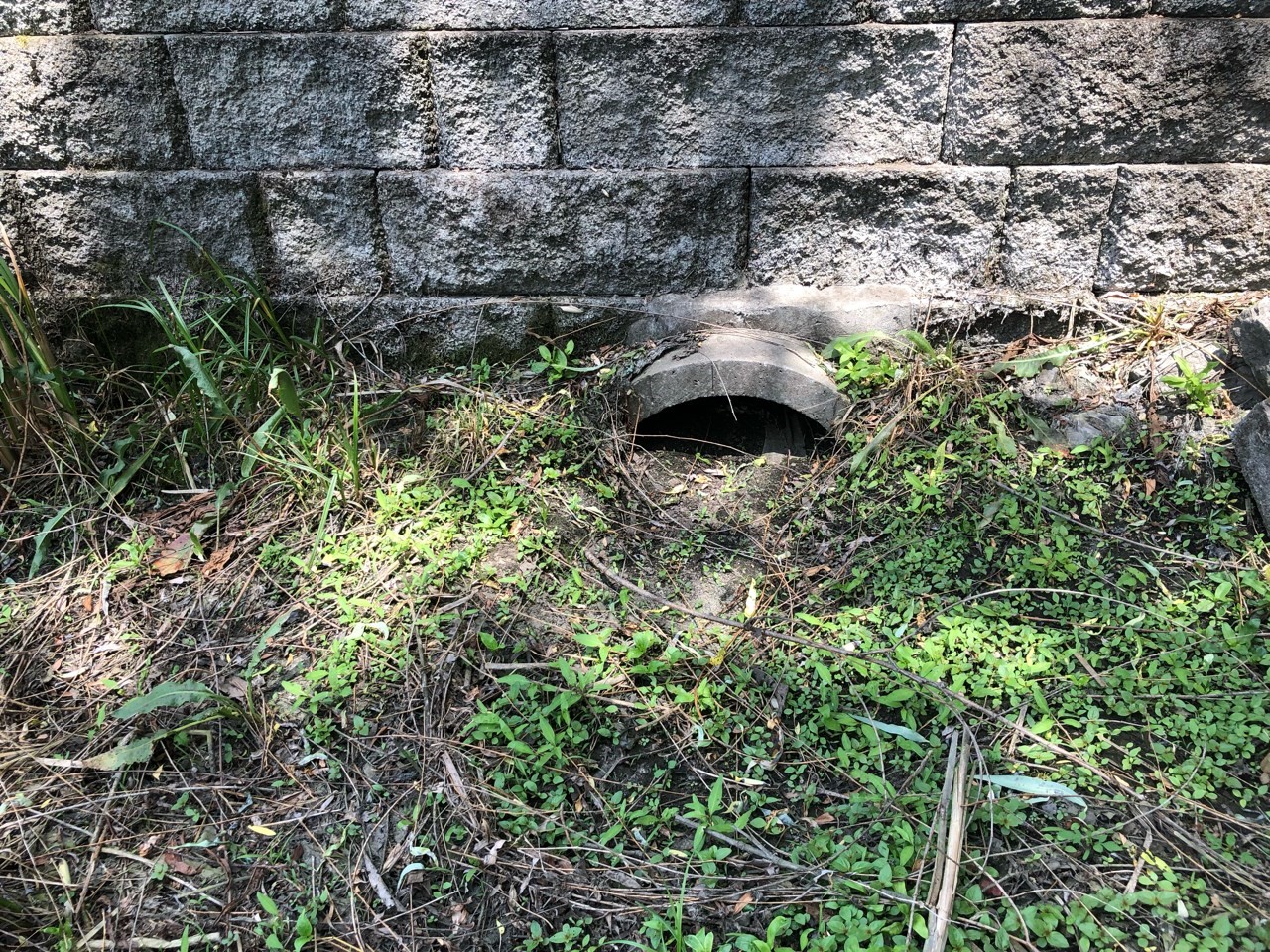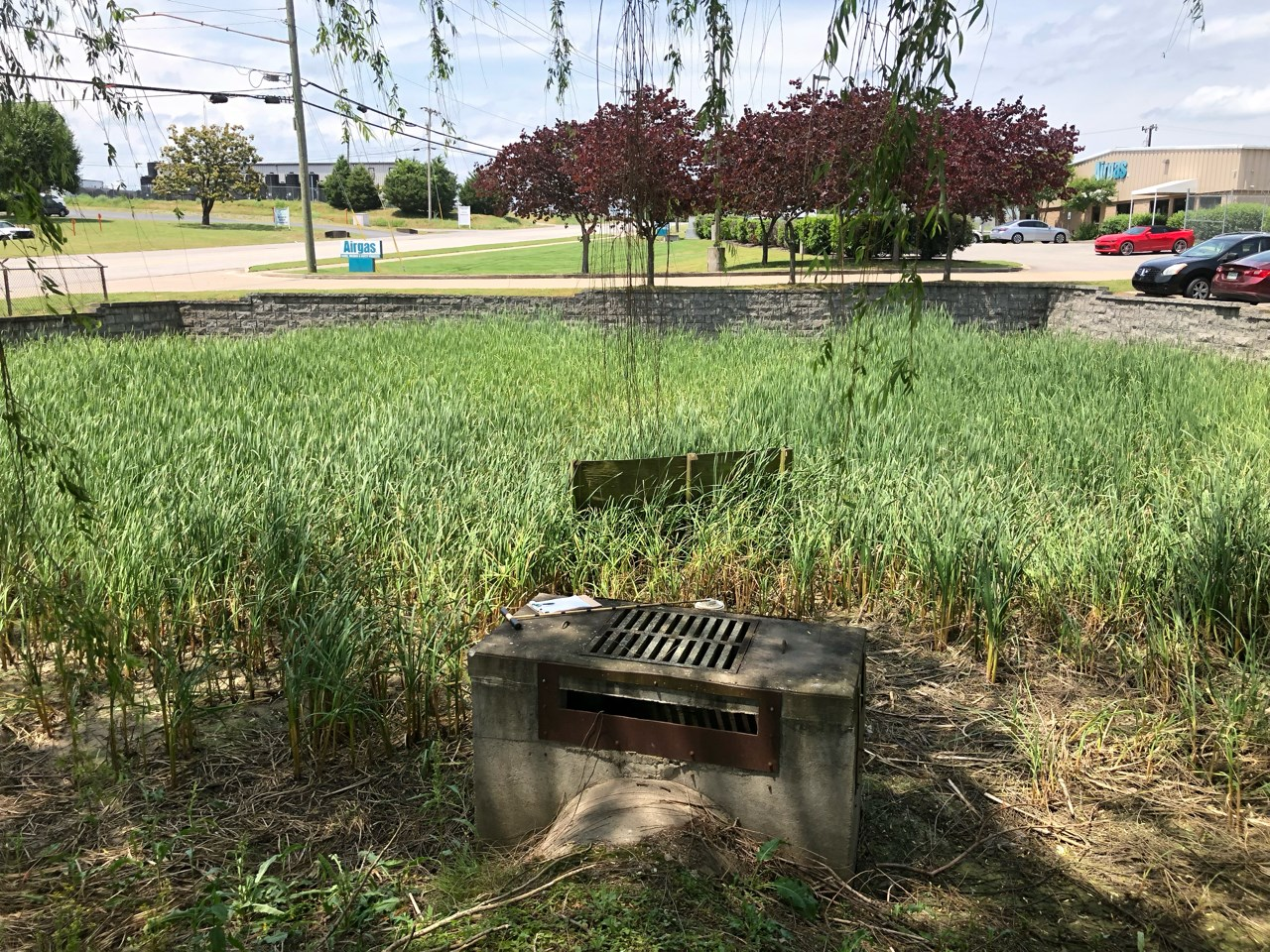Dry Detention System
Overview:
An industrial supplier in Nashville, TN received a Notice of Violation (NOV) stating that their detention pond was out of compliance with the City of Nashville. Northstar was called to inspect the dry pond and determine the best course of action to resolve the issues identified by the City of Nashville.
Issues:
At the time of Northstar’s free consultation the dry detention system was overgrown with cattails and heavily encumbered by excessive sediment deposition. This was causing the detention pond to hold water longer than the required infiltration period designated by the City of Nashville. The cattail’s dense root system had formed a mat-like system under the surface of the soil which led to a significant decrease in the permeability of the pond basin. This increased the chance of flooding and created a breeding ground for mosquitoes. Furthermore, the sediment accumulation had nearly clogged several of the inlet pipes which increases the likelihood of water backing up in the pipes and causing flooding.
Solution:
Northstar developed a scope of work and timeline to bring the system back into compliance, which was approved by the City of Nashville as well as the property manager. Northstar began the rehabilitation of this system by removing all cattails and approximately 6-8 inches of sediment from the forebay and grading it. By grading the forebay the incoming water disperses evenly as it enters the pond basin, decreasing the likelihood of future erosion. Then, the sediment and cattails were removed from the detention pond, the basin was graded, and sod was placed to stabilize the floor of the pond. The sod was an important step because without some kind of vegetative competition the cattails would likely have reestablished itself. Northstar developed a management plan for the property manager to ensure the pond continues to function as designed and keep them in compliance.
